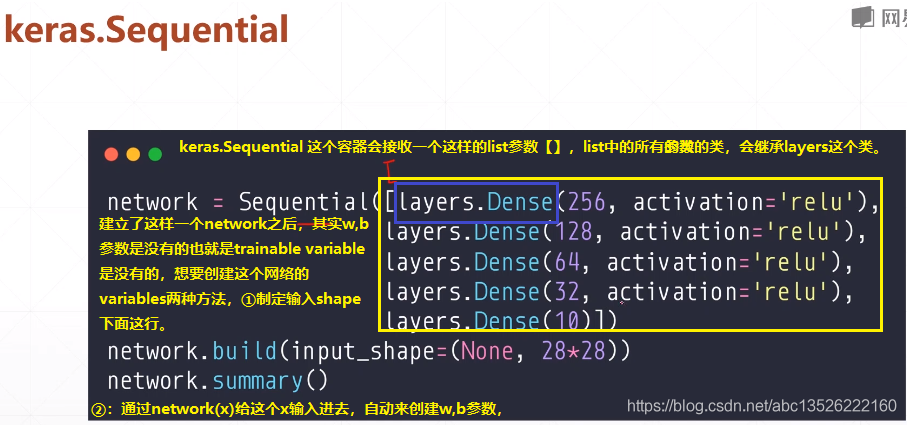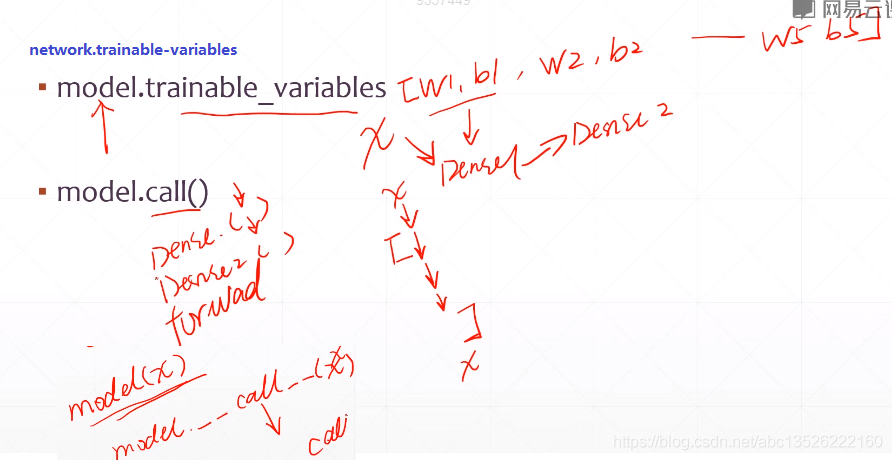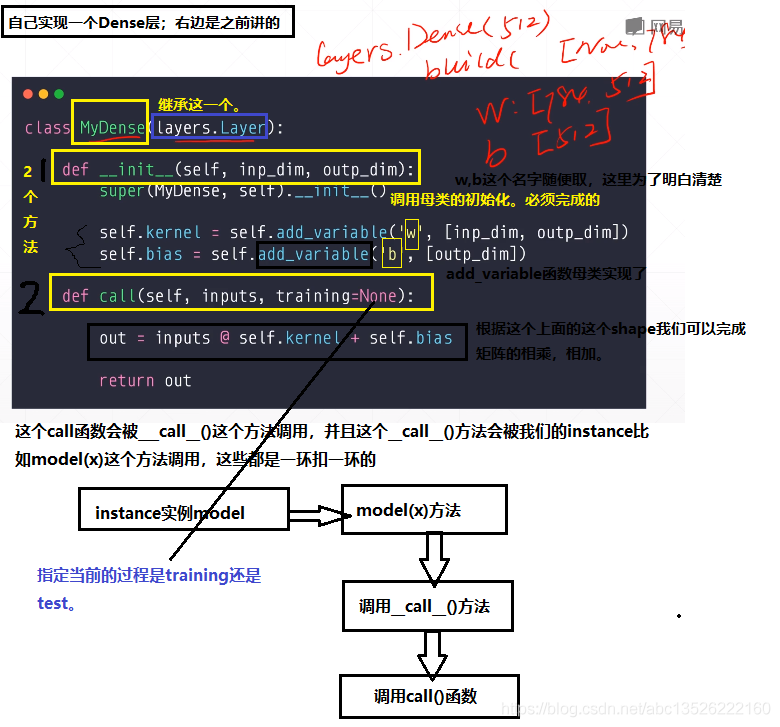一、讲解






二、代码
import tensorflow as tf from tensorflow.python.keras import datasets, layers, optimizers, Sequential, metrics from tensorflow.python import keras import os os.environ['TF_CPP_MIN_LOG_LEVEL'] = '2' def preprocess(x, y): """ x is a simple image, not a batch :param x: :param y: :return: """ x = tf.cast(x, dtype=tf.float32) / 255. x = tf.reshape(x, [28*28]) y = tf.cast(y, dtype=tf.int32) y = tf.one_hot(y, depth=10) return x, y batchsz = 128 (x, y), (x_val, y_val) = datasets.mnist.load_data() print("datasets: ", x.shape, y.shape, x.min(), x.max()) db = tf.data.Dataset.from_tensor_slices((x, y)) db = db.map(preprocess).shuffle(60000).batch(batchsz) ds_val = tf.data.Dataset.from_tensor_slices((x_val, y_val)) ds_val = ds_val.map(preprocess).batch(batchsz) iteration = iter(db) sample = next(iteration) print("迭代器获得为:", sample[0].shape, sample[1].shape) class MyDense(layers.Layer): def __init__(self, inp_dim, outp_dim): super(MyDense, self).__init__() self.kernel = self.add_variable('w', [inp_dim, outp_dim]) self.bias = self.add_variable('b', [outp_dim]) def call(self, input, training=None): out = input @ self.kernel + self.bias return out class MyModel(keras.Model): def __init__(self): super(MyModel, self).__init__() self.fc1 = MyDense(28*28, 256) self.fc2 = MyDense(256, 128) self.fc3 = MyDense(128, 64) self.fc4 = MyDense(64, 32) self.fc5 = MyDense(32, 10) def call(self, inputs, training=None): x = self.fc1(inputs) ##fc1为一个instance,默认调用__call__()==> call() x = tf.nn.relu(x) x = self.fc2(x) x = tf.nn.relu(x) x = self.fc3(x) x = tf.nn.relu(x) x = self.fc4(x) x = tf.nn.relu(x) x = self.fc5(x) return x network = MyModel() network.compile(optimizer=optimizers.Adam(lr=0.01), loss=tf.losses.CategoricalCrossentropy(from_logits=True), metrics=['accuracy'] ) network.fit(db, epochs=5, validation_data=ds_val, validation_freq=2) network.evaluate(ds_val) sample = next(iter(ds_val)) x = sample[0] y = sample[1] # one-hot pred = network.predict(x) # [b, 10] # convert back to number y = tf.argmax(y, axis=1) # [b, 1] pred = tf.argmax(pred, axis=1) print(pred) print(y)